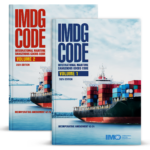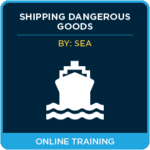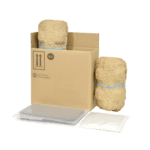
What’s New in the IMDG Code Amendment 42-24?
While the world can be a very confusing, irregular place, a few things stay constant. One of them is the United Nations’ biennial update to the UN Model Regulations on the Safe Transport of Dangerous Goods and the subsequent updating of other regulations that are based on it. For example, the International Maritime Dangerous Goods (IMDG) Code, which sets the rules for international ocean shipment, recently published its 42nd revision. Rather confusingly titled the “2024 edition” based on its year of publication, it’s actually intended to take effect January 1, 2025. However, you may still use the 41st edition until January 1, 2026, so this coming year is a transitional period as shippers and carriers switch to the updated regulations.
What’s New in the 2024 Edition?
As we saw in the UN Recommendations themselves, the changes in the IMDG Code for this biennium are mostly incremental, not sweeping. Think of them like “ease of use” improvements in most situations.
Here are some of the more notable changes to the new Code:
- New shipping descriptions have been added to the Code. These include:
- Entries for the new technology, SODIUM ION BATTERIES, either as standalones or with equipment (similar to LITHIUM ION BATTERIES). They will be included in Class 9 and be broken into high and low-powered versions similar to lithium ion batteries.
- A new series of names will break out vehicles powered by lithium batteries or sodium ion batteries from vehicles powered by wet or other battery types such as wet or non-spillable batteries. This will improve fire response since such batteries require specialized measures.
- FIRE SUPPRESSANT DISPERSING DEVICES, which use a charge to spray fire suppressants over a wide area, now have their own entry.
- GALLIUM IN MANUFACTURERED ARTICLES, a liquid metal similar to but less common than mercury will be treated in the same method as mercury.
- Entries for the specialized chemicals DISILANE, TRIFLUOROMETHYL-TETRAZOLE-SODIUM SALT IN ACETONE and TRETRAMETHAMMONIUM HYDROXIDE AQUEOUS SOLUTION have been added.
- After considerable testing and research, Intermediate Bulk Containers (IBCs) will be able to be manufactured from recycled plastics.
- Provisions for CARBON (UN1361) and ACTIVATED CARBON have been modified by significant changes in their special provisions. Carbon shipments will now require the date of production and packaging, as well as the temperature of the material when packed, to be added to the shipping document as per the new section 5.4.1.5.18. Carbon can now be found in the stowage and handling procedures for Class 4 in section 7.6.2.7.
- For the gases UN1006 (ARGON, COMPRESSED), UN1013 (CARBON DIOXIDE, COMPRESSED), UN1056 (KRYPTON, COMPRESSED) and UN1066 (NITROGEN, COMPRESSED) a new special provision 406 provides an option to ship them as limited quantities in containers up to 1000 mL if certain provisions are met. This is a significant upgrade from the previous 120 mL limit.
- The chemical TETRAMETHYLAMMONIUM HYDROXIDE, SOLID has been reclassified as a Division 6.1 with a subsidiary hazard of Class 8 and placed in Packing Group I. This will prevent it from being transported as a Limited Quantity, and shipment in IBCs will now require special competent authority approval.
- New packing instructions have been added for UN3555, TRIFLUOROMETHYL-TETRAZOLE-SODIUM SALT IN ACETONE (P303) and vehicles powered by lithium or sodium ion batteries (P912).
- The lithium battery Class 9 label and the lithium battery mark for low-powered lithium batteries will now also be used for Sodium ion batteries. Therefore, they have been renamed the “Lithium or Sodium Ion Battery Class 9 Label” and “Lithium or Sodium Ion Battery Mark”.
- A new section 5.4.4.2 requires that a certificate exempting a substance from the provisions of the IMDG Code and referred to in a special provision for that substance must be submitted together with the cargo information required by the SOLAS regulation VI/2.
Conclusion
The IMDG Code changes for this biennium are small but can be significant for certain materials. Always work from a current copy of the regulations and get started making any necessary updates long before the deadline of January 1, 2026 – remember, ocean shipments often spend months in transport.
Do you have any questions about shipping dangerous goods by sea? Contact our team of Regulatory Experts today!
Stay up to date and sign up for our newsletter!
We have all the products, services and training you need to ensure your staff is properly trained and informed.
 IMDG Publications IMDG Publications |
 Shipping Dangerous Shipping DangerousGoods by Sea |
 4GV Securepacc™ 4GV Securepacc™Complete Shipping Kits |
References:
International Maritime Organization, The International Maritime Dangerous Goods (IMDG) Code
UN Sub-Committee of Experts on the Transport of Dangerous Goods, UN Recommendations on the Transport of Dangerous Goods – Model Regulations Twenty-third revised edition





